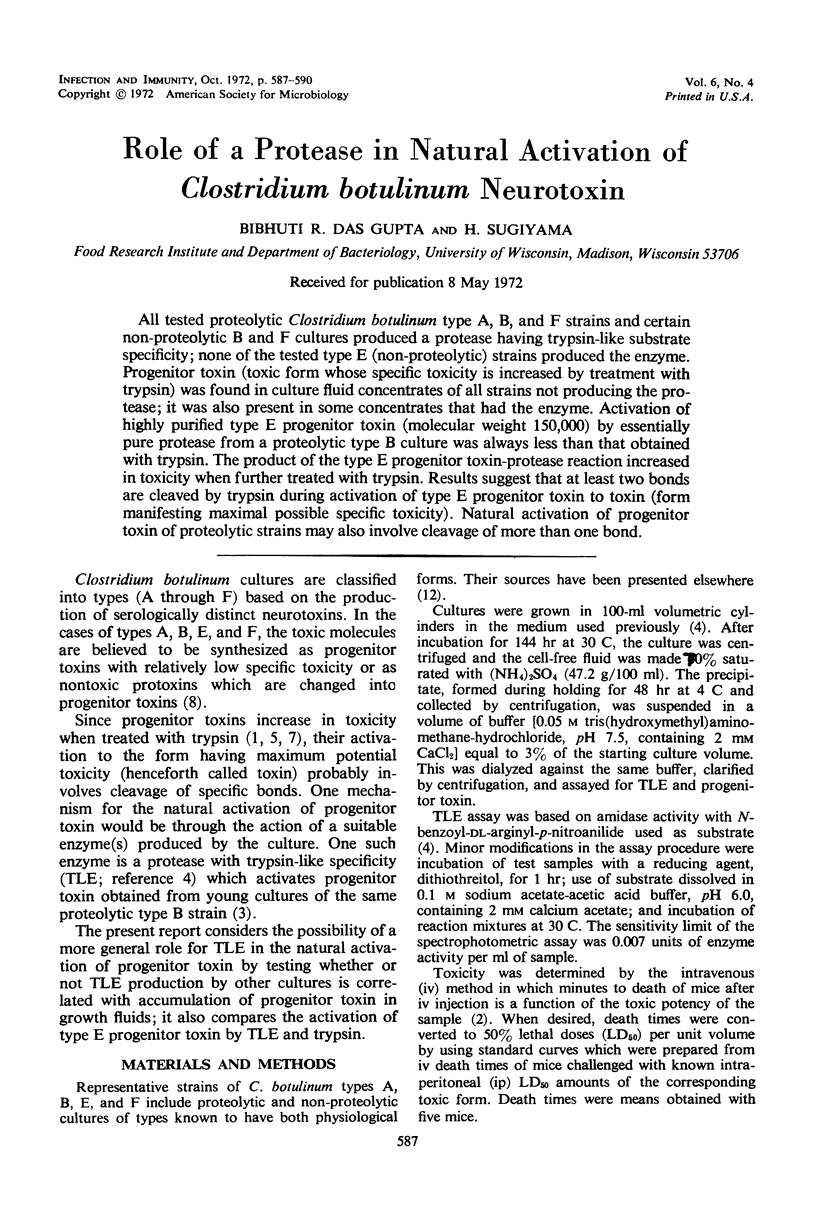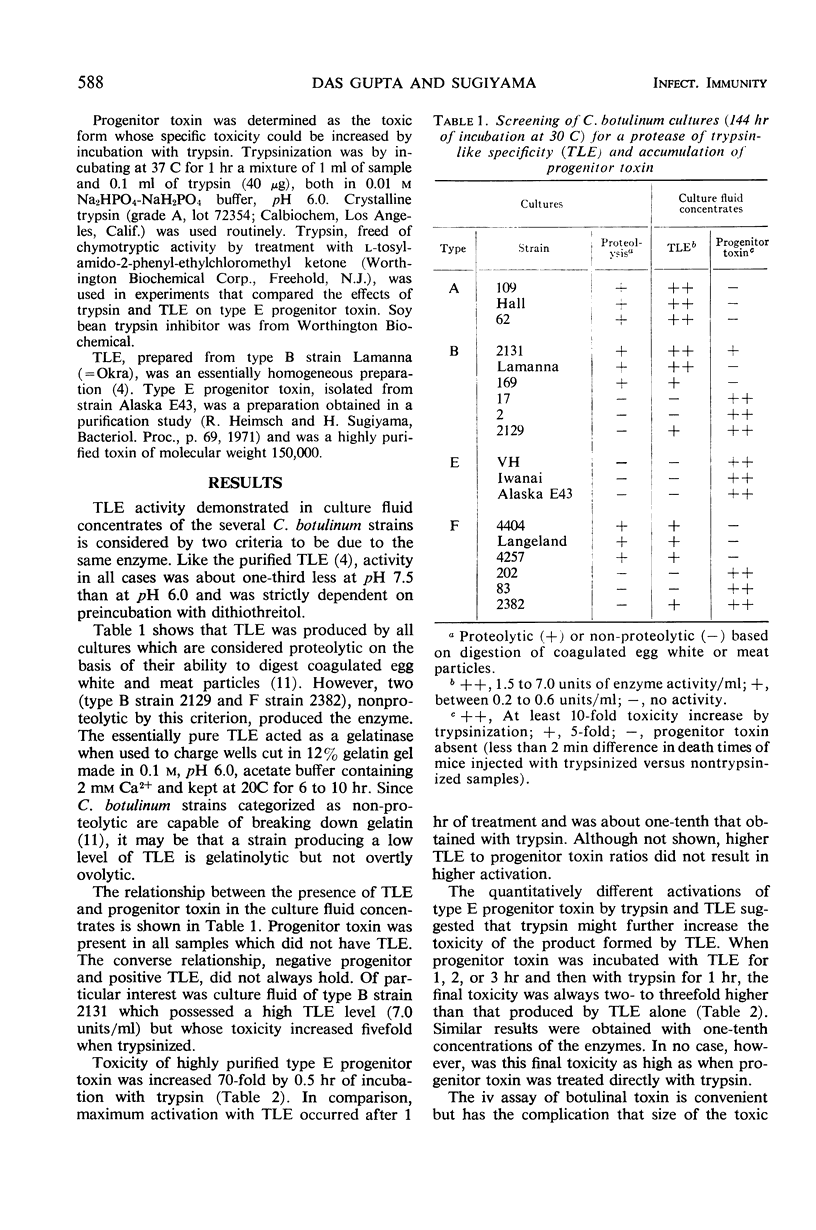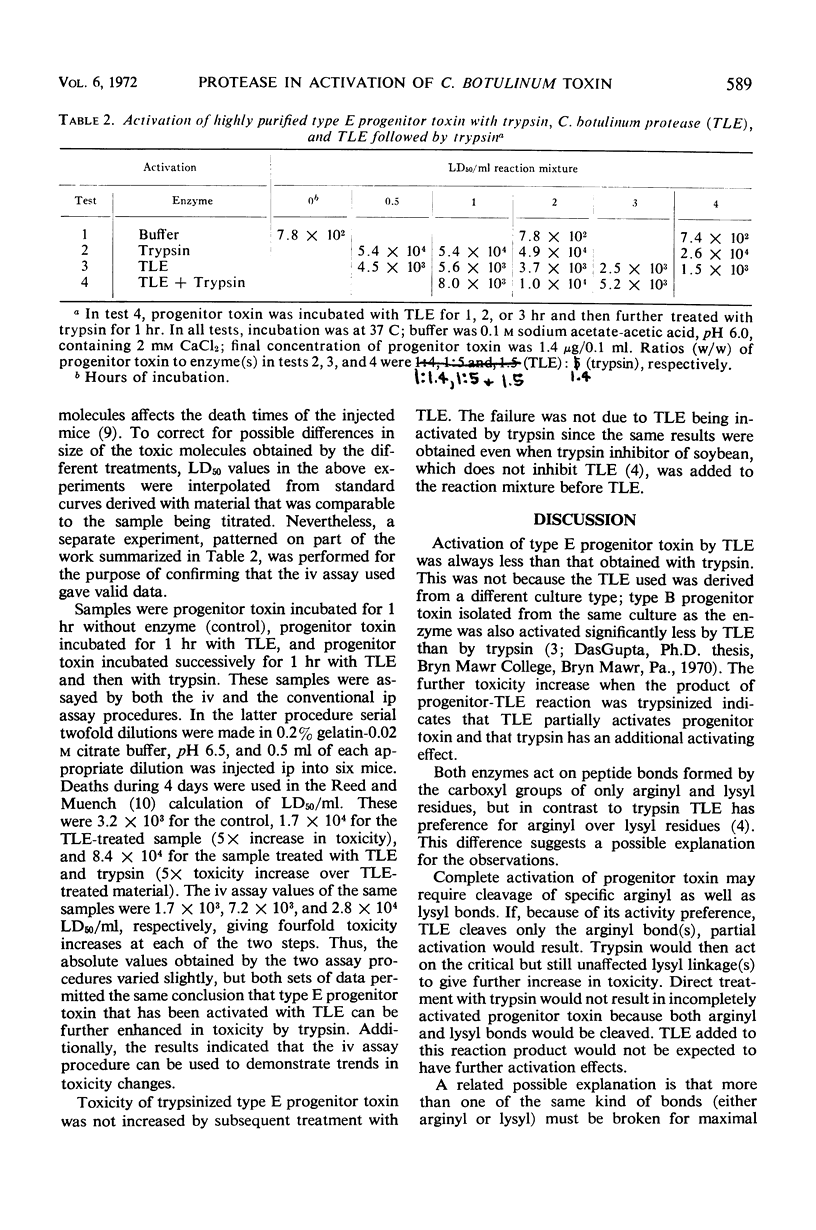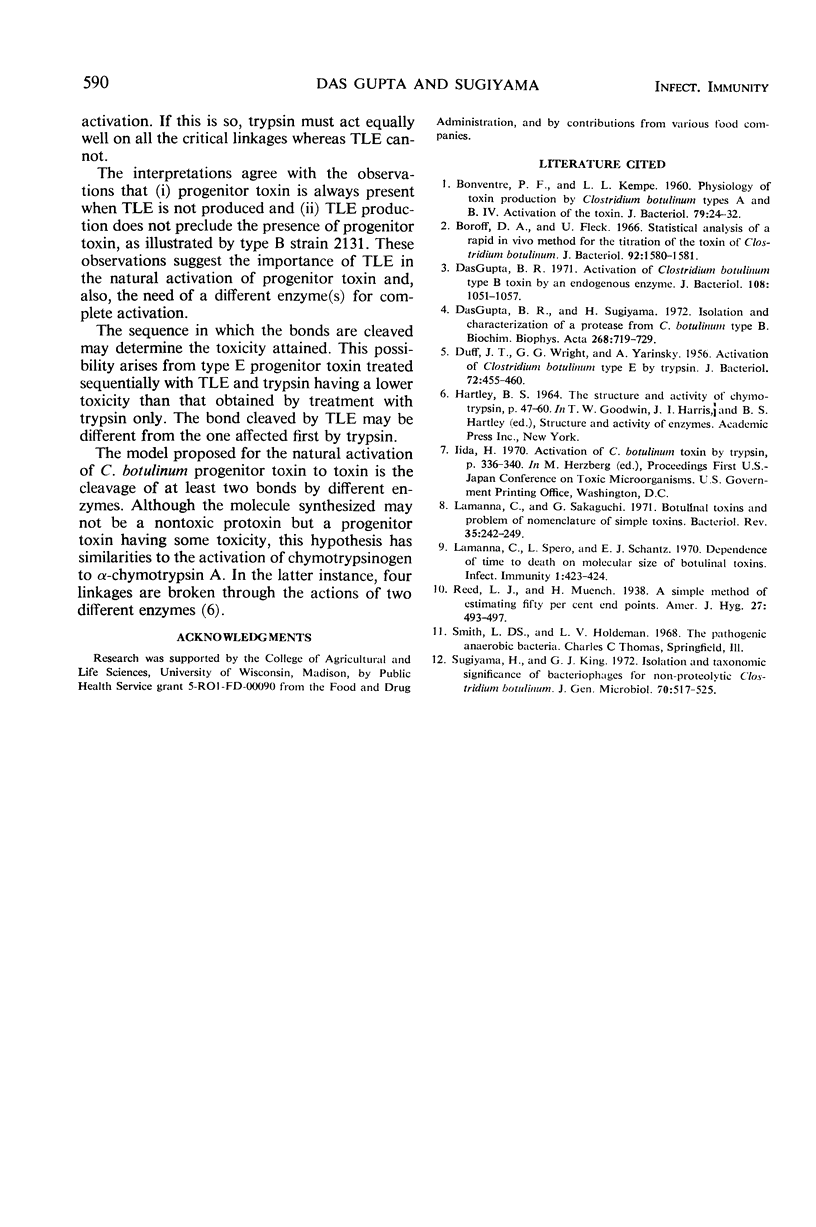Abstract
All tested proteolytic Clostridium botulinum type A, B, and F strains and certain non-proteolytic B and F cultures produced a protease having trypsin-like substrate specificity; none of the tested type E (non-proteolytic) strains produced the enzyme. Progenitor toxin (toxic form whose specific toxicity is increased by treatment with trypsin) was found in culture fluid concentrates of all strains not producing the protease; it was also present in some concentrates that had the enzyme. Activation of highly purified type E progenitor toxin (molecular weight 150,000) by essentially pure protease from a proteolytic type B culture was always less than that obtained with trypsin. The product of the type E progenitor toxin-protease reaction increased in toxicity when further treated with trypsin. Results suggest that at least two bonds are cleaved by trypsin during activation of type E progenitor toxin to toxin (form manifesting maximal possible specific toxicity). Natural activation of progenitor toxin of proteolytic strains may also involve cleavage of more than one bond.
Full text
PDF



Selected References
These references are in PubMed. This may not be the complete list of references from this article.
- BONVENTRE P. F., KEMPE L. L. Physiology of toxin production by Clostridium botulinum types A and B. IV. Activation of the toxin. J Bacteriol. 1960 Jan;79:24–32. doi: 10.1128/jb.79.1.24-32.1960. [DOI] [PMC free article] [PubMed] [Google Scholar]
- Boroff D. A., Fleck U. Statistical analysis of a rapid in vivo method for the titration of the toxin of Clostridium botulinum. J Bacteriol. 1966 Nov;92(5):1580–1581. doi: 10.1128/jb.92.5.1580-1581.1966. [DOI] [PMC free article] [PubMed] [Google Scholar]
- DUFF J. T., WRIGHT G. G., YARINSKY A. Activation of Clostridium botulinum type E toxin by trypsin. J Bacteriol. 1956 Oct;72(4):455–460. doi: 10.1128/jb.72.4.455-460.1956. [DOI] [PMC free article] [PubMed] [Google Scholar]
- DasGupta B. R. Activation of Clostridium botulinum type B toxin by an endogenous enzyme. J Bacteriol. 1971 Dec;108(3):1051–1057. doi: 10.1128/jb.108.3.1051-1057.1971. [DOI] [PMC free article] [PubMed] [Google Scholar]
- Dasgupta B. R., Sugiyama H. Isolation and characterization of a protease from Clostridium botulinum type B. Biochim Biophys Acta. 1972 Jun 16;268(3):719–729. doi: 10.1016/0005-2744(72)90276-8. [DOI] [PubMed] [Google Scholar]
- Lamanna C., Sakaguchi G. Botulinal toxins and the problem of nomenclature of simple toxins. Bacteriol Rev. 1971 Sep;35(3):242–249. doi: 10.1128/br.35.3.242-249.1971. [DOI] [PMC free article] [PubMed] [Google Scholar]
- Lamanna C., Spero L., Schantz E. J. Dependence of time to death on molecular size of botulinum toxin. Infect Immun. 1970 Apr;1(4):423–424. doi: 10.1128/iai.1.4.423-424.1970. [DOI] [PMC free article] [PubMed] [Google Scholar]
- Sugiyama H., King G. J. Isolation and taxonomic significance of bacteriophages for non-proteolytic Clostridium botulinum. J Gen Microbiol. 1972 May;70(3):517–525. doi: 10.1099/00221287-70-3-517. [DOI] [PubMed] [Google Scholar]


